Filter by

Food Service Management at Tzu Chi Hospital
- Edition
- -
- ISBN/ISSN
- EP043
- Collation
- 30 p. : ill. ; 30 cm.
- Series Title
- -
- Call Number
- EP FSN-004
- Edition
- -
- ISBN/ISSN
- EP043
- Collation
- 30 p. : ill. ; 30 cm.
- Series Title
- -
- Call Number
- EP FSN-004

Determining the Diet Quality, Chronotype, Chrononutrition Behavior, Sleep Qua…
- Edition
- -
- ISBN/ISSN
- EP042
- Collation
- 101 p. : ill. ; 30 cm.
- Series Title
- -
- Call Number
- EP FSN-003
- Edition
- -
- ISBN/ISSN
- EP042
- Collation
- 101 p. : ill. ; 30 cm.
- Series Title
- -
- Call Number
- EP FSN-003

Industrial Internship Report at PT Dapur Sehat Indonesia (Healthy Go)
- Edition
- -
- ISBN/ISSN
- EP041
- Collation
- 31 p. : ill. ; 30 cm.
- Series Title
- -
- Call Number
- EP FSN-002
- Edition
- -
- ISBN/ISSN
- EP041
- Collation
- 31 p. : ill. ; 30 cm.
- Series Title
- -
- Call Number
- EP FSN-002

Healing foods
- Edition
- -
- ISBN/ISSN
- 9781842051573
- Collation
- 224 p. ; 20 cm.
- Series Title
- -
- Call Number
- 613.2 Wri h
- Edition
- -
- ISBN/ISSN
- 9781842051573
- Collation
- 224 p. ; 20 cm.
- Series Title
- -
- Call Number
- 613.2 Wri h

Nutritional Diversity as a Protective Factor: Exploring the Link Between Diet…
Child stunting affects millions globally, including 6.3 million in Indonesia. Factors like family background, diet, and health contribute to stunting. A diverse diet is crucial for preventing stunting and promoting optimal growth. The study examines how socioeconomic factors affect stunting, its impact on children’s dietary diversity, and compares the nutritional awareness of mothers betw…
- Edition
- -
- ISBN/ISSN
- -
- Collation
- -
- Series Title
- -
- Call Number
- FSN 24-009

The breast cancer prevention diet
- Edition
- -
- ISBN/ISSN
- 9780316051149
- Collation
- xiv, 258 p. : ill. : ind. ; 21 cm.
- Series Title
- -
- Call Number
- 616.99 Arn b
- Edition
- -
- ISBN/ISSN
- 9780316051149
- Collation
- xiv, 258 p. : ill. : ind. ; 21 cm.
- Series Title
- -
- Call Number
- 616.99 Arn b

Diet and Physical Activity on Bone Mineral Density of Postmenopausal New Zeal…
Osteoporosis is a globally prevalent metabolic bone condition characterized by fragile and low density of bones commonly affecting elderly individuals. It arises from a combination of factors, which include aging, lifestyle choices, genetics and insufficient nutritional resources to sustain optimal bone mineral density (BMD). This condition elevates the risk of bone fractures and is often a…
- Edition
- -
- ISBN/ISSN
- -
- Collation
- -
- Series Title
- -
- Call Number
- FSN 24-018

Association between Child-related Factors and Wasting in Children Aged 6-59 M…
Childhood malnutrition, particularly wasting, remains a significant and persistent challenge in Malaysian children under 5 years old, with current prevalence reported at 11% in 2022. Child-related factors, such as birth weight, morbidity, vaccination completeness, feeding practices, and dietary diversity have been found to provide a direct and immediate influence on children’s overall nut…
- Edition
- -
- ISBN/ISSN
- -
- Collation
- -
- Series Title
- -
- Call Number
- FSN 24-019

Inaugural conference of the society of Asian Food Studies - The 14th Asian Fo…
- Edition
- -
- ISBN/ISSN
- -
- Collation
- 75 p. ; 30 cm.
- Series Title
- -
- Call Number
- 641.5636 Ina
- Edition
- -
- ISBN/ISSN
- -
- Collation
- 75 p. ; 30 cm.
- Series Title
- -
- Call Number
- 641.5636 Ina

Effect Of Soluble Dietary Fiber On Micelle Stability During In-vitro Digestio…
Cardiovascular diseases (CVDs) are mainly caused by postprandial lipemia (PPL), an increase of triglycerides-rich lipoprotein level in blood between time after a meal. Food consumption containing dietary fiber has been reported to lower blood triglycerides accumulation. Hence, this study aims to understand the effect of soluble non-viscous dietary fiber towards the lipid absorption in the food …
- Edition
- -
- ISBN/ISSN
- -
- Collation
- -
- Series Title
- -
- Call Number
- EP FT-023
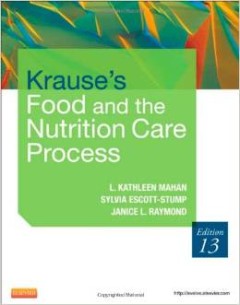
Krause s food and the nutrition care process
The most respected nutrition text for more than 50 years, Krause's Food and the Nutrition Care Process delivers comprehensive and up-to-date information from respected educators and practitioners in the field. The latest recommendations include the new MyPlate guide, the Dietary Guidelines for Americans 2010, new and expanded chapters, and a large variety of tables, boxes, and pathophysiology a…
- Edition
- 13th
- ISBN/ISSN
- 9781437722338
- Collation
- xix, 1227 p. : ill. : ind. ; 29 cm.
- Series Title
- -
- Call Number
- 615.854 Mah k

Embracing the Importance of Health Status Maintanance on Young Adolescents Ag…
Adolescent nutrition and health can improve by practicing healthy eating habits, engaging in regular physical activity, and maintaining good personal hygiene. A healthy breakfast and balanced diet can help teens focus better in class, build strong bones and muscles via regular exercise, and improve their self-worth and physical cleanliness through good personal hygiene. Teenagers in Indonesia a…
- Edition
- -
- ISBN/ISSN
- -
- Collation
- -
- Series Title
- -
- Call Number
- EP FS013

Assessment of Soy (Glycine max L.) Intake Using Semi-Quantitative Food Freque…
Soybean (Glycine max L.), a species of legumes, is a well-known source of highquality plant-based protein widely cultivated in Asia. An intake of ≥25 g/day of soy protein has been reported to be associated with a lot of health outcomes. In Indonesia, soybean is one of the most favored protein sources. In order to understand the frequencies and amounts of macro- and/or micronutrients from …
- Edition
- -
- ISBN/ISSN
- -
- Collation
- -
- Series Title
- -
- Call Number
- FS 23-003

Idenfying Dietary Paerns in Respect to Ultra-Processed Food (UPF) In French A…
The consumpon of ultra processed food (UPF) has been rapidly increasing globally. This is concerning, as UPFs are characterised by high levels of sugar, fat, sodium and has been associated with the increasing prevalence of obesity and non-communicable diseases (NCDs). Despite the growing concern over UPFs, there has been lile aenon given to…
- Edition
- -
- ISBN/ISSN
- -
- Collation
- -
- Series Title
- -
- Call Number
- FSN 22-023

Lipoprotein Lipase and Cholesteryl Ester Transfer Protein Genes-Dietary Fat I…
India has the second-highest type 2 diabetes mellitus (T2DM) due to the South Asian phenotype, poor lipid profile, and unbalanced dietary pattern. Evidence has been discovered that single nucleotide polymorphisms (SNPs) in the lipoprotein lipase (LPL) and cholesteryl ester transfer protein (CETP) genes are linked to differences in lipid levels in response to dietary intake. Hence, this revie…
- Edition
- -
- ISBN/ISSN
- -
- Collation
- -
- Series Title
- -
- Call Number
- FSN 22-020

Penuntun diet edisi baru
- Edition
- Edisi baru
- ISBN/ISSN
- 9789794031056
- Collation
- 288 p. : ill. ; 20cm.
- Series Title
- -
- Call Number
- 615.854 Pen
- Edition
- Edisi baru
- ISBN/ISSN
- 9789794031056
- Collation
- 288 p. : ill. ; 20cm.
- Series Title
- -
- Call Number
- 615.854 Pen

Diet sehat golongan darah AB : diet tanpa rasa lapar
- Edition
- -
- ISBN/ISSN
- 9799797982287
- Collation
- 98 p. : ill. ; 18 cm.
- Series Title
- -
- Call Number
- 613.2 D'Ad d
- Edition
- -
- ISBN/ISSN
- 9799797982287
- Collation
- 98 p. : ill. ; 18 cm.
- Series Title
- -
- Call Number
- 613.2 D'Ad d

Diet sehat golongan darah O : diet tanpa rasa lapar
- Edition
- -
- ISBN/ISSN
- 9789796949199
- Collation
- 92 p. : ill. ; 18 cm.
- Series Title
- -
- Call Number
- 613.2 D'Ad d
- Edition
- -
- ISBN/ISSN
- 9789796949199
- Collation
- 92 p. : ill. ; 18 cm.
- Series Title
- -
- Call Number
- 613.2 D'Ad d

Micronutrients in health and disease second edition
- Edition
- -
- ISBN/ISSN
- 9781138500020
- Collation
- xxxi, 528 p. : ill. ; 26 cm.
- Series Title
- -
- Call Number
- 612.39 Pra m
- Edition
- -
- ISBN/ISSN
- 9781138500020
- Collation
- xxxi, 528 p. : ill. ; 26 cm.
- Series Title
- -
- Call Number
- 612.39 Pra m
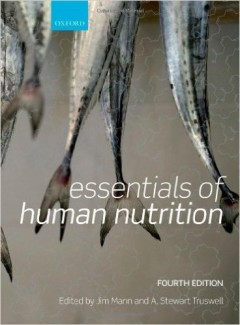
Essentials of human nutrition
Nutrition is one of the most important determinants of individual and public health. An increasingly informed public expects its health and food professionals to be able to offer clear, evidence-based advice on diet and associated health implications, but how can established nutrition principles be extracted from the extensive body of often misleading information available in the public domain?…
- Edition
- 4th
- ISBN/ISSN
- 9780199566341
- Collation
- xx, 695 p. : ill. : ind. ; 25 cm.
- Series Title
- -
- Call Number
- 612.3 Ess
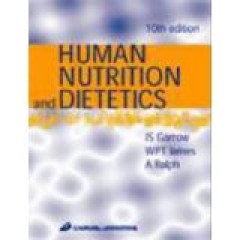
Human nutrition and dietetics
- Edition
- 10th
- ISBN/ISSN
- 9780443056277
- Collation
- 900 p. : ill. : ind. ; 28 cm.
- Series Title
- -
- Call Number
- 613.2 Gar h
- Edition
- 10th
- ISBN/ISSN
- 9780443056277
- Collation
- 900 p. : ill. : ind. ; 28 cm.
- Series Title
- -
- Call Number
- 613.2 Gar h

Nutrition and diet therapy
NUTRITION AND DIET THERAPY, 9th Edition, is unique in its organization by diets rather than by organ systems or disease states and distinguishes itself through rich pedagogical features that require students to apply their knowledge as they learn it. This text provides core nutrition concepts and up-to-date clinical content at a level that is accessible to the range of health care team members …
- Edition
- 9th
- ISBN/ISSN
- 9781305110403
- Collation
- xix, 668 p. : ill. : ind. ; 28 cm.
- Series Title
- -
- Call Number
- 615.854 Deb n

Handbook of normal and therapeutic nutrition
- Edition
- -
- ISBN/ISSN
- 0890043256
- Collation
- xiv, 323 p. : ill. ; 25 cm.
- Series Title
- -
- Call Number
- 613.2 Eag h
- Edition
- -
- ISBN/ISSN
- 0890043256
- Collation
- xiv, 323 p. : ill. ; 25 cm.
- Series Title
- -
- Call Number
- 613.2 Eag h

Basic nutrition in health diseases : including selection and care of food
- Edition
- 6th
- ISBN/ISSN
- 072164788X
- Collation
- xi, 454 p. : ill. ; 24 cm.
- Series Title
- -
- Call Number
- 613.2 How b
- Edition
- 6th
- ISBN/ISSN
- 072164788X
- Collation
- xi, 454 p. : ill. ; 24 cm.
- Series Title
- -
- Call Number
- 613.2 How b
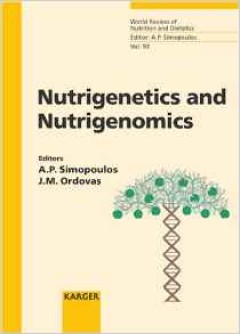
Nutrigenetics and nutrigenomics
For the first time, international scientists describe the advances in genetics and nutrition by combining methods of molecular biology with those of functional genetics, also known as systems biology. This book provides the latest data on genetic variation and dietary response, nutrients and gene expression, and the contribution molecular biology has given to systems biology. It also includes a…
- Edition
- -
- ISBN/ISSN
- 9783805577823
- Collation
- xii, 324 p. : ill. : ind. ; 24 cm.
- Series Title
- World Review of Nutrition and Dietetics Vol.93
- Call Number
- 612.3 Nut

Handbook of prebiotics and probiotics ingredients
While there is little dispute that probiotics and prebiotics, alone and together, have been proven to promote gastrointestinal health and proper immune function, the challenge faced by researchers is finding not only the right combinations, but also finding those that are fully compatible with the formulation, processing, packaging, and distribution of functional foods. The Handbook of Prebioti…
- Edition
- -
- ISBN/ISSN
- 9781420062137
- Collation
- xvii, 435 p. : ill. : ind. ; 24 cm.
- Series Title
- -
- Call Number
- 615.329 Cho h

Food forensics : the hidden toxins lurking in your food and how you can avoid…
- Edition
- -
- ISBN/ISSN
- 9781940363288
- Collation
- xxi, 368 p. : ill. : ind. ; 23 cm.
- Series Title
- -
- Call Number
- 613.2 Ada f
- Edition
- -
- ISBN/ISSN
- 9781940363288
- Collation
- xxi, 368 p. : ill. : ind. ; 23 cm.
- Series Title
- -
- Call Number
- 613.2 Ada f
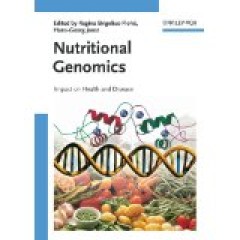
Nutritional genomics : impact on health and disease
"Nutritional Genomics" paves the way for novel applications in medicine and human nutrition, and this volume presents the latest data on how genetic variation is associated with dietary response and how nutrients influence gene expression. In doing so, it brings together the various disciplines involved in this field of research, making this essential reading for nutritionists, biochemists and …
- Edition
- -
- ISBN/ISSN
- 9783527312948
- Collation
- xxviii, 442 p. : ill. ; 25 cm.
- Series Title
- -
- Call Number
- 612.3 Nut

Nutrition and diet therapy 8th ed.
NUTRITION AND DIET THERAPY, 8th Edition, is unique in its organization by diets rather than by organ systems or disease states and distinguishes itself through rich pedagogical features that require students to apply their knowledge as they learn it. This text provides core nutrition concepts and up-to-date clinical content at a level that is accessible to the range of health care team members …
- Edition
- 8th
- ISBN/ISSN
- 9780840049445
- Collation
- xxiii, 659 p. : ill. : ind. ; 28 cm.
- Series Title
- -
- Call Number
- 615.854 Deb n
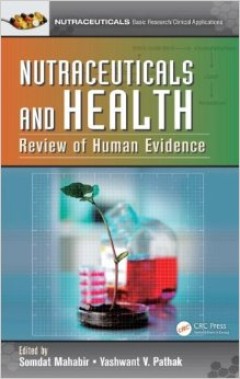
Nutraceuticals and health : review of human evidence
Although health claims for nutraceuticals range from the fantastic to the sublime, most of these claims are based on cell culture studies and have not been validated in humans, making them inadequate for public health recommendations. Focusing on human population-based research (epidemiology studies), Nutraceuticals and Health: Review of Human Evidence explores the role of nutraceuticals in hum…
- Edition
- -
- ISBN/ISSN
- 9781466517226
- Collation
- xxi, 373 p. : ill. : ind. ; 24 cm.
- Series Title
- -
- Call Number
- 615.854 Nut

Modern nutrition in health and disease
The book is a complete, authoritative reference on nutrition and its role in contemporary medicine, dietetics, nursing, public health, and public policy. Distinguished international experts provide in-depth information on historical landmarks in nutrition, specific dietary components, nutrition in integrated biologic systems, nutritional assessment through the life cycle, nutrition in various c…
- Edition
- 11th
- ISBN/ISSN
- 9781605474618
- Collation
- xxiv, 1616 p. : ill. : ind. ; 28 cm.
- Series Title
- -
- Call Number
- 613.2 Ros m
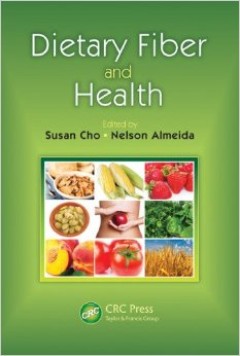
Dietary fiber and health
Preface Fiber offers a variety of health benefits and is essential to reduce the risk of such chronic diseases as diabetes, obesity, cardiovascular disease, and diverticulitis. According to the Institute of Medicine (IOM), adequate intake (AI) of total fiber should be 14 g/1000 kcal. The IOM recommendation is joined by those from a variety of government public health agencies that promote incre…
- Edition
- -
- ISBN/ISSN
- 9781439899298
- Collation
- xviii, 539 p. : ill. : ind. ; 24 cm.
- Series Title
- -
- Call Number
- 615.854 Die
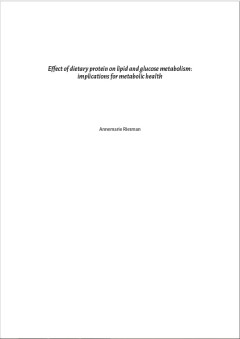
Effect of dietary protein on lipid and glucose metabolism : implications for …
- Edition
- -
- ISBN/ISSN
- 978-94-6257-348-2
- Collation
- -
- Series Title
- -
- Call Number
- 613.2 Rie e
- Edition
- -
- ISBN/ISSN
- 978-94-6257-348-2
- Collation
- -
- Series Title
- -
- Call Number
- 613.2 Rie e

Dietary quality, lifestyle factors and healthy ageing in Europe
- Edition
- -
- ISBN/ISSN
- 90-5808-534-1
- Collation
- 128 p. : ill. ; 24 cm.
- Series Title
- -
- Call Number
- 613.2 Hav d
- Edition
- -
- ISBN/ISSN
- 90-5808-534-1
- Collation
- 128 p. : ill. ; 24 cm.
- Series Title
- -
- Call Number
- 613.2 Hav d
 Computer Science, Information & General Works
Computer Science, Information & General Works  Philosophy & Psychology
Philosophy & Psychology  Religion
Religion  Social Sciences
Social Sciences  Language
Language  Pure Science
Pure Science  Applied Sciences
Applied Sciences  Art & Recreation
Art & Recreation  Literature
Literature  History & Geography
History & Geography